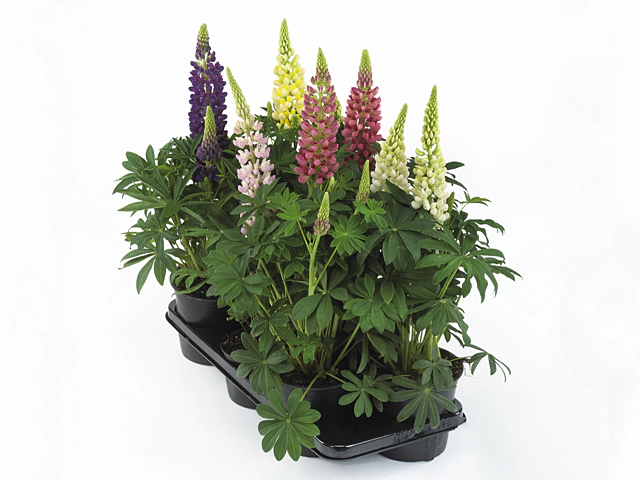Lupinus Lupini mixed

| Winter hardness | Good (USDA-zone 5, 6) |
| Flower color | Mixed |
| Flower diameter | 1 - 1,5 cm |
| Plant height | 40 - 50 cm |
| Flower length/hight | 1,5 - 2 cm |
| Inflorescence | Raceme |
| Flowering month(s) | May; June; July |
| Leaf size | 10 - 15 cm |
| soil pH requirement | Slightly acidic (pH 4,5 - 6,5); Neutral (pH 6,5 - 7,5) |
| Light conditions | Sunny |
| Leaf division | Palmate |
| Leaf, main color | Dark green |
| Moisture requirements | Well-drained |
Lupinus Lupini, commonly known as Lupini mixed, is a versatile and beautiful plant that thrives in various climates. With its winter hardiness and adaptability to different soil pH levels, this plant is a popular choice for gardeners looking to add color and vibrancy to their gardens.
The flower color of Lupinus Lupini mixed is a captivating mix of hues, creating a stunning display of beauty. The flowers range from 1 to 1.5 cm in diameter and are clustered in racemes, creating a visually appealing inflorescence. The flowering months for this plant are May, June, and July, ensuring a vibrant burst of color during the summer months.
Standing at a height of 40 to 50 cm, Lupinus Lupini mixed adds a vertical element to garden designs, making it an excellent choice for borders or as a focal point in flower beds. The flower length and height measure between 1.5 to 2 cm, enhancing the overall visual impact of this plant.
The leaves of Lupinus Lupini mixed are palmate in shape, adding an interesting texture to the garden landscape. The dark green main color of the leaves serves as a striking backdrop for the colorful flowers. With a leaf size of 10 to 15 cm, this plant contributes to the overall lushness and density of the garden.
In terms of soil preferences, Lupinus Lupini mixed is adaptable to slightly acidic (pH 4.5 to 6.5) and neutral (pH 6.5 to 7.5) soil conditions. This versatility allows it to thrive in different types of soil, making it an excellent choice for various garden settings.
When it comes to light requirements, Lupinus Lupini mixed prefers sunny conditions. Placing this plant in an area with direct sunlight will ensure optimal growth and flowering. However, it can tolerate partial shade, although it may result in fewer blooms.
One important aspect of caring for Lupinus Lupini mixed is ensuring well-drained soil. It is crucial to prevent the plant from sitting in water, as excessively moist conditions can lead to root rot and other issues. Regular watering is necessary, especially during dry spells, but ensuring proper drainage is key to maintaining the health of the plant.
In conclusion, Lupinus Lupini mixed is a dynamic and adaptable plant that adds beauty and color to any garden. Its winter hardiness, mixed flower color, and raceme inflorescence make it pleasing to the eye. With its palmate leaves and dark green main color, it provides an interesting texture and backdrop for the flowers. Its preference for slightly acidic to neutral soil pH levels and sunny conditions make it a versatile choice for gardeners. As long as it is provided with well-drained soil, Lupinus Lupini mixed will thrive and contribute to the overall lushness and vibrancy of any garden setting.
Market availability index by month:
| Jan. | Feb. | Mar. | Apr. | May | Jun. | Jul. | Aug. | Sep. | Oct. | Nov. | Dec. |
|---|---|---|---|---|---|---|---|---|---|---|---|
| 1 | 1 | 3 | 3 | 4 | 2 | 1 | 1 | 1 | 1 | 1 | - |